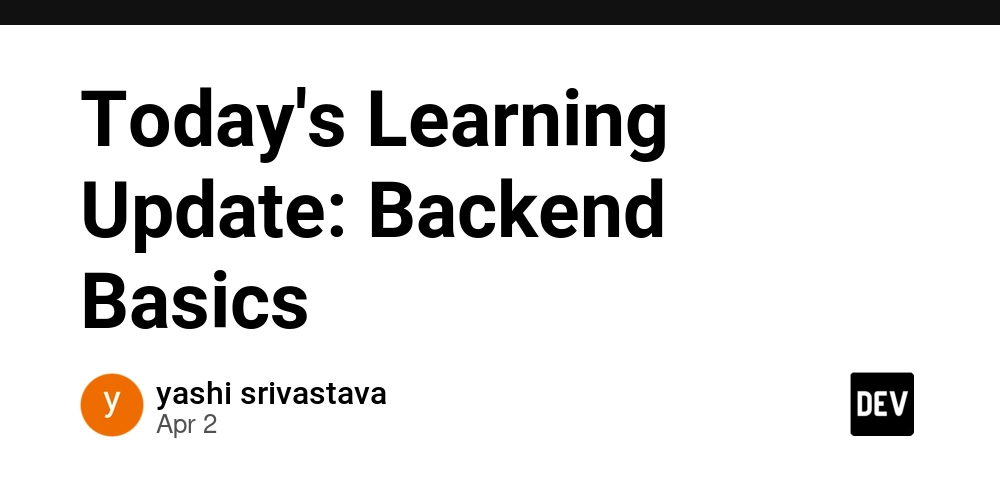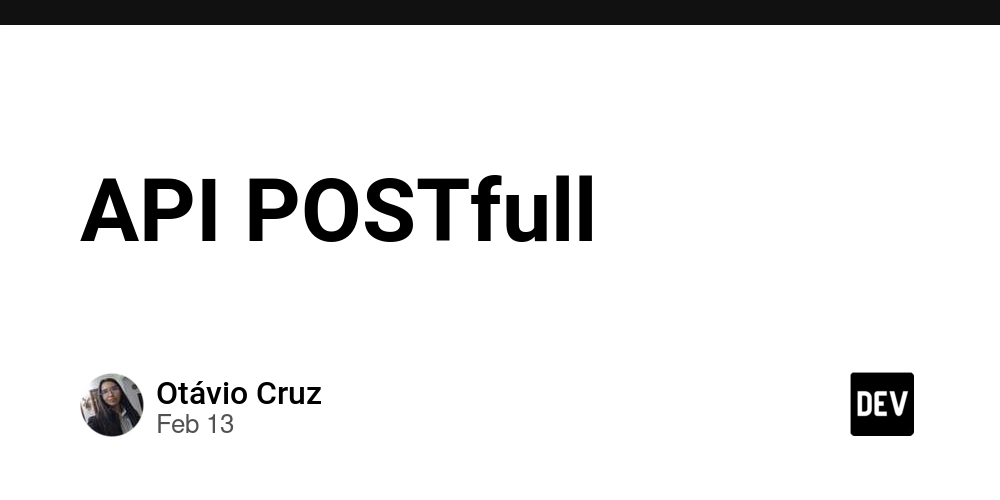Today's Learning Update: Backend Basics
Storing Images in a Database We don’t store the actual image in the database; instead, we store its link while the image is hosted elsewhere. Understanding Collections, Schemas & Databases Collection → Similar to a table in SQL. Schema → Defines the fields stored in a collection (e.g., id, name, email). Database (DB) → A container for all collections. HTTP Methods & Postman POST → Sends data to the database (used for creating records). GET → Fetches data from the database. Postman → A tool to send requests to the backend and check responses. Backend Function Calls When we send a POST/GET request from Postman, it's like calling a function. These functions must be defined in our backend (JS file). The JS file acts as a medium that queries the database to store or retrieve data. Postman is like a frontend where we send and request data. Destructuring & Spread Operator in JavaScript Destructuring const obj = { name: "John Doe", email: "john@example.com" }; const { name, email } = obj; console.log(name); // John Doe console.log(email); // john@example.com Makes it easier to access object properties directly. Spread Operator (...) const arr1 = [1, 2, 3, 4]; const arr2 = [5, 6]; const arr3 = [...arr1, ...arr2]; console.log(arr3); // [1, 2, 3, 4, 5, 6] Combines multiple arrays/objects into one. User Registration & Validations Validations ensure that only correct data enters the database (e.g., email format, age limit). When updating an entry, we need to explicitly enable validation: runValidators: true Timestamps (createdAt, updatedAt) Track when a user registered and when they last updated their profile. Platforms like Instagram use this to filter users based on registration date (e.g., last 7 days, 1 month). Immutable Fields Some fields cannot be changed after creation (e.g., emailID). Must be enforced at the schema level. API-Level Validation API acts as a middleware between Postman (client) and the database (server). API validation checks user data before sending it to the database to: Avoid unnecessary DB calls (reducing cost & improving performance). Enhance user experience by preventing delays.

Storing Images in a Database
We don’t store the actual image in the database; instead, we store its link while the image is hosted elsewhere.
Understanding Collections, Schemas & Databases
Collection → Similar to a table in SQL.
Schema → Defines the fields stored in a collection (e.g., id, name, email).
Database (DB) → A container for all collections.
HTTP Methods & Postman
POST → Sends data to the database (used for creating records).
GET → Fetches data from the database.
Postman → A tool to send requests to the backend and check responses.
Backend Function Calls
When we send a POST/GET request from Postman, it's like calling a function.
These functions must be defined in our backend (JS file).
The JS file acts as a medium that queries the database to store or retrieve data.
Postman is like a frontend where we send and request data.
Destructuring & Spread Operator in JavaScript
Destructuring
const obj = { name: "John Doe", email: "john@example.com" };
const { name, email } = obj;
console.log(name); // John Doe
console.log(email); // john@example.com
Makes it easier to access object properties directly.
Spread Operator (...)
const arr1 = [1, 2, 3, 4];
const arr2 = [5, 6];
const arr3 = [...arr1, ...arr2];
console.log(arr3); // [1, 2, 3, 4, 5, 6]
Combines multiple arrays/objects into one.
User Registration & Validations
Validations ensure that only correct data enters the database (e.g., email format, age limit).
When updating an entry, we need to explicitly enable validation:
runValidators: true
Timestamps (createdAt, updatedAt)
Track when a user registered and when they last updated their profile.
Platforms like Instagram use this to filter users based on registration date (e.g., last 7 days, 1 month).
Immutable Fields
Some fields cannot be changed after creation (e.g., emailID).
Must be enforced at the schema level.
API-Level Validation
API acts as a middleware between Postman (client) and the database (server).
API validation checks user data before sending it to the database to:
Avoid unnecessary DB calls (reducing cost & improving performance).
Enhance user experience by preventing delays.













































































































































































![[The AI Show Episode 142]: ChatGPT’s New Image Generator, Studio Ghibli Craze and Backlash, Gemini 2.5, OpenAI Academy, 4o Updates, Vibe Marketing & xAI Acquires X](https://www.marketingaiinstitute.com/hubfs/ep%20142%20cover.png)































































































































![[DEALS] Microsoft Office Professional 2021 for Windows: Lifetime License (75% off) & Other Deals Up To 98% Off – Offers End Soon!](https://www.javacodegeeks.com/wp-content/uploads/2012/12/jcg-logo.jpg)













































































































































_Anthony_Brown_Alamy.jpg?#)
_Hanna_Kuprevich_Alamy.jpg?#)




.png?#)

























































































![Hands-on: We got to play Nintendo Switch 2 for nearly six hours yesterday [Video]](https://i0.wp.com/9to5toys.com/wp-content/uploads/sites/5/2025/04/Switch-FI-.jpg.jpg?resize=1200%2C628&ssl=1)
![Fitbit redesigns Water stats and logging on Android, iOS [U]](https://i0.wp.com/9to5google.com/wp-content/uploads/sites/4/2023/03/fitbit-logo-2.jpg?resize=1200%2C628&quality=82&strip=all&ssl=1)














![YouTube Announces New Creation Tools for Shorts [Video]](https://www.iclarified.com/images/news/96923/96923/96923-640.jpg)

![Apple Faces New Tariffs but Has Options to Soften the Blow [Kuo]](https://www.iclarified.com/images/news/96921/96921/96921-640.jpg)




































































































































